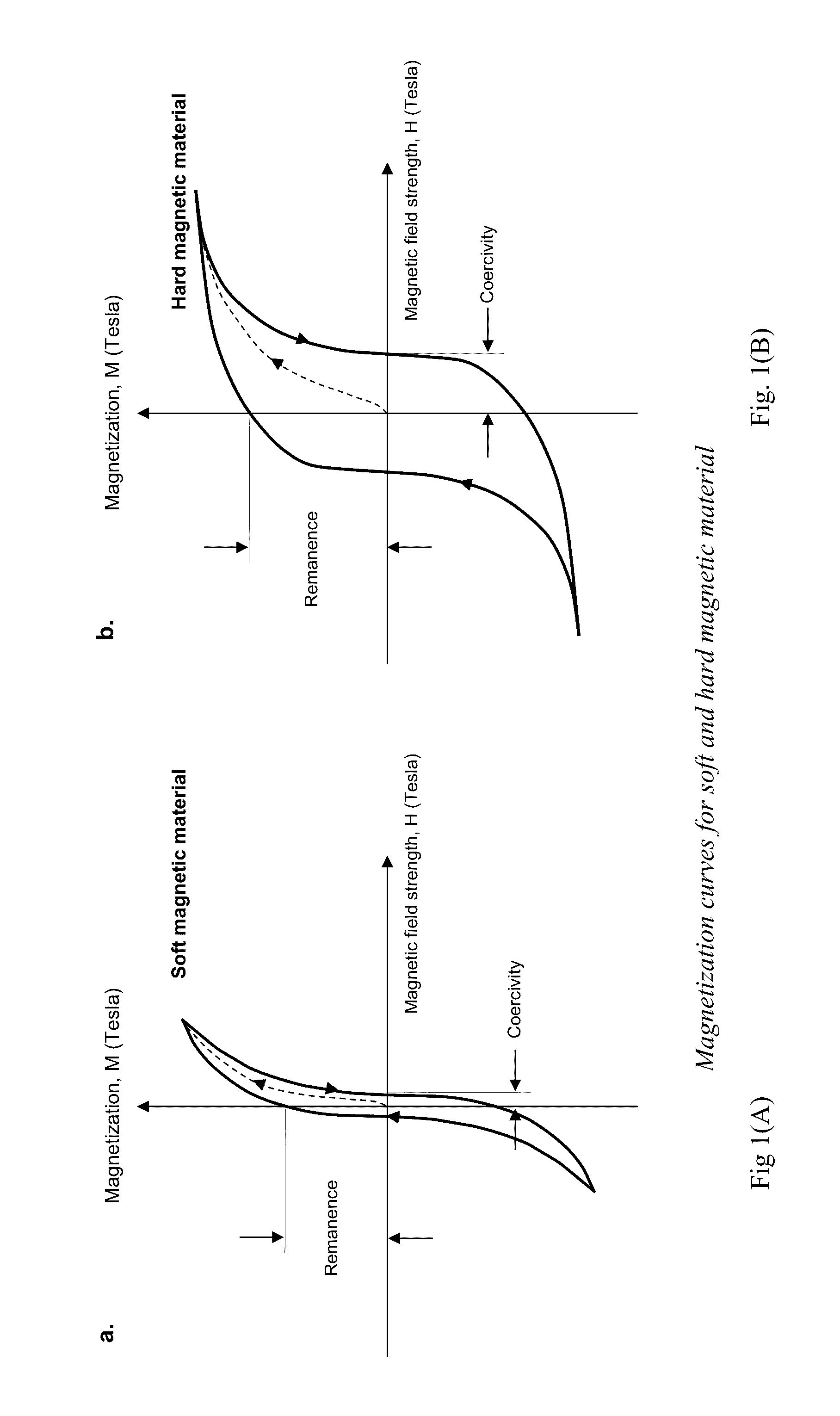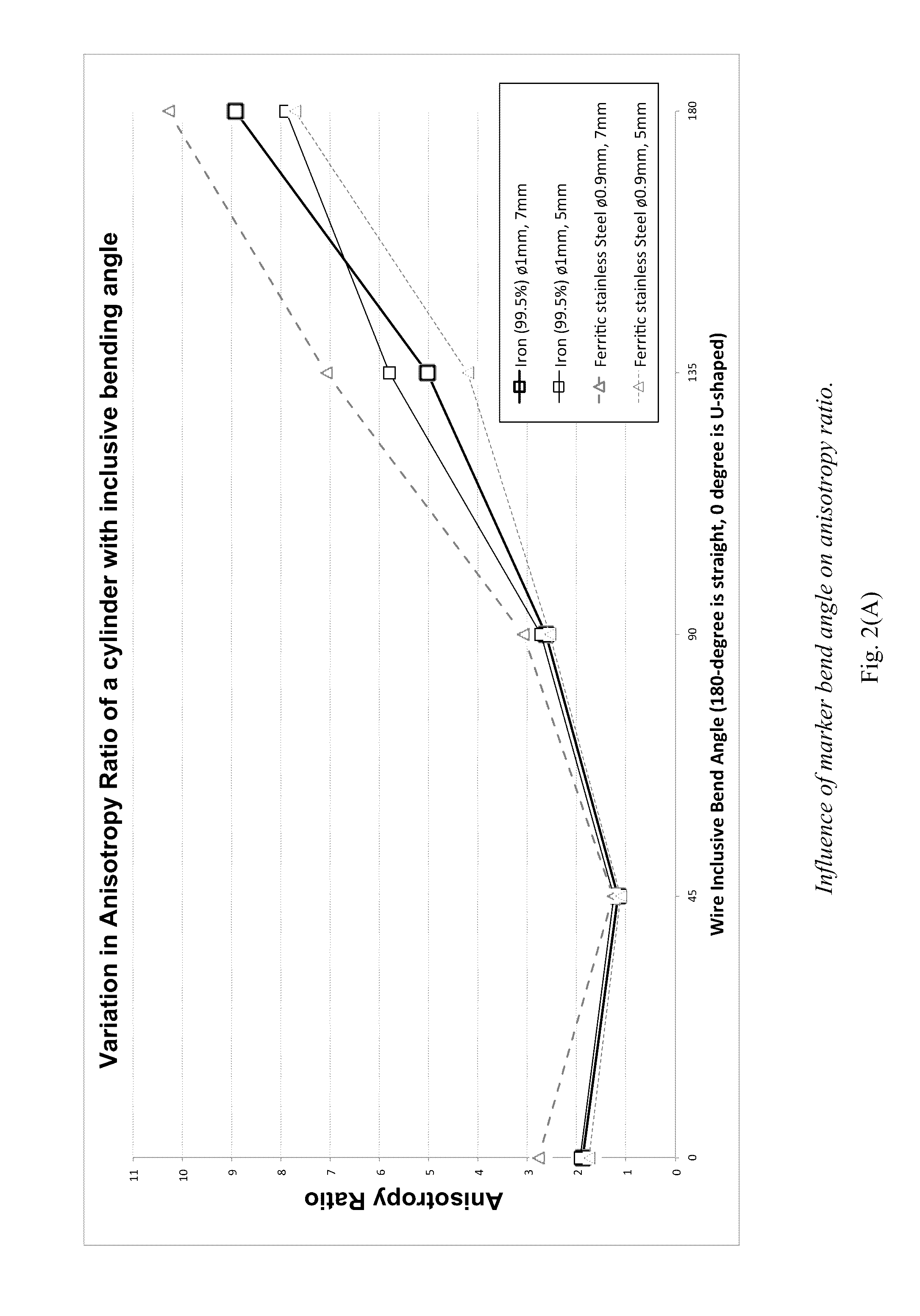Marker Materials and Forms for Magnetic Marker Localization (MML)
a magnetic marker and material technology, applied in the field of medical detection, can solve the problems of logistical and scheduling difficulties between radiology and surgery departments, hook wires can migrate away from the site of lesion or become displaced, and achieve the effect of uniform magnetic respons
- Summary
- Abstract
- Description
- Claims
- Application Information
AI Technical Summary
Benefits of technology
Problems solved by technology
Method used
Image
Examples
Embodiment Construction
[0042]A method for making magnetic markers as permanent magnets is described in U.S. Pat. No. 6,173,715. Permanent magnet implants have the drawback that they will attract any magnetic material in the vicinity and therefore could interact undesirably with other implants, or move in the tissue, for example, when a surgical tool made from magnetic material is nearby.
[0043]A method for making markers formed from superparamagnetic iron oxide (SPIO) nanoparticles in bioabsorbable form is described in US Publication No. 2014 / 0314679. SPIO particles avoid the concerns that occur for permanent magnetic markers because such materials have no magnetic remanence, and are not magnetic in themselves, but only become magnetized when in the presence of a magnetic field. The detection and localization of these SPIO magnetic markers can be performed with a sensitive magnetometer (or susceptometer) that generates an alternating magnetic field to excite the marker magnetically, and detects the magneti...
PUM
 Login to View More
Login to View More Abstract
Description
Claims
Application Information
 Login to View More
Login to View More - R&D
- Intellectual Property
- Life Sciences
- Materials
- Tech Scout
- Unparalleled Data Quality
- Higher Quality Content
- 60% Fewer Hallucinations
Browse by: Latest US Patents, China's latest patents, Technical Efficacy Thesaurus, Application Domain, Technology Topic, Popular Technical Reports.
© 2025 PatSnap. All rights reserved.Legal|Privacy policy|Modern Slavery Act Transparency Statement|Sitemap|About US| Contact US: help@patsnap.com



